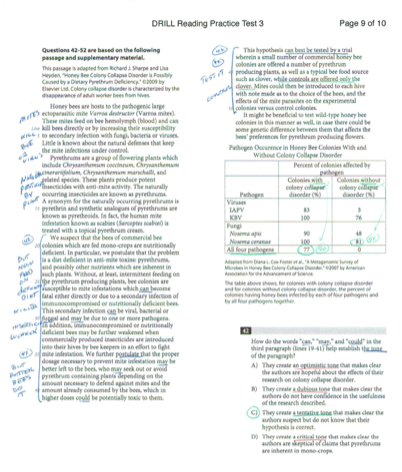Honey Bee Colony Collapse Disorder is possibly caused by a dietary pyrethrum deficiency by Richard J Sharpe and Lisa Heyden

VIEW FULL PASSAGE
PASSAGE & VIDEO EXPLANATION
Bee Colony Collapse Disorder (CCD) is a phenomenon characterized by the sudden and widespread disappearance of worker bees from a beehive or colony. The exact causes of CCD are complex and not fully understood, and researchers have identified several factors that may contribute to this phenomenon. Common factors associated with CCD include:

Pesticides: Exposure to neonicotinoid pesticides and other agricultural chemicals has been linked to bee health issues.
Parasites: Varroa mites are a major threat to honey bees, and infestations can weaken and ultimately decimate colonies.
Pathogens: Honey bees can be affected by various viruses, bacteria, and fungi that can lead to colony collapse.

Nutritional Stress: Lack of diverse and nutritious forage can weaken bees and make them more susceptible to other stressors.
Stress from Transportation: The commercial transportation of honey bee colonies for pollination services can subject bees to stress, making them more vulnerable to diseases and other threats.
Climate Change: Changes in climate patterns and extreme weather events can impact the availability of food sources for bees.

Habitat Loss: Destruction of natural habitats and lack of diverse forage can limit the food sources available to bees.
It's essential to note that CCD is likely a result of the interaction of multiple stressors rather than a single cause. The scientific community continues to conduct research to better understand the complexities of CCD and develop strategies for mitigating its impact.


Leave a Reply